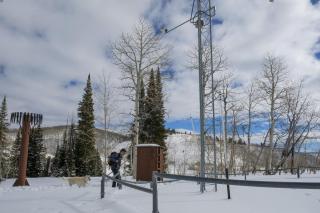September 1st Climate and Water Report for Utah

The following summary provides a snapshot of Utah’s current water conditions in both our valley and mountain areas as of September 1st. Please see the attached report for full details, graphs, and supporting information.
Valley Conditions (SCAN): After a disappointing July for precipitation, things turned around in August! Utah received 1.9 inches of precipitation in our valley locations, which was well above normal (213%). Western Utah fared particularly well, with 319% of normal precipitation received for the month. Statewide, the August precipitation brings Utah’s water-year-to-date value for valley locations to 136% of median. While we have focused much attention on our historic winter, in general this summer has provided significant moisture across the state as well. It is therefore not surprising that statewide soil moisture at Utah’s SCAN sites ended the month well above normal at 43% of saturation, which was 6% higher than last year and in the top 10th percentile of all observations for that date.
Mountain Conditions (SNOTEL): The month of August provided Utah’s mountains with well above normal precipitation as well. The state’s SNOTEL sites received 3.2” of rainfall, which was 215% of normal. Utah’s water-year-to-date precipitation was 139% of median by the end of August, which was a boost of 3% compared with the beginning of the month, reflecting the frequency and intensity of our August storms. As a result of all that rainfall, statewide soil moisture in Utah’s mountains was also well above normal by September 1st at 44% of saturation, which is 6% higher than last year’s value at this time. Utah’s reservoir storage has remained high; as of September 1st the state was at 77% of capacity, which was 31% higher than last year’s value.
Water Availability Indices (WAIs) for Utah basins combine current reservoir conditions with observed streamflow for each region. WAIs are in the top 20th percentile for 13 of Utah’s 18 major basins, again reflecting the statewide benefit of our record-breaking snowpack last winter. That said, despite all the positive conditions described above, we express herein our ongoing concerns about water levels in our largest water bodies (Bear Lake, Great Salt Lake, and Lake Powell) where it will take (at least) an additional above-normal snowpack season this winter to see lake levels increase enough to approach ‘normal’ conditions. As we have noted in previous reports, it continues to be critically important to conserve Utah’s precious water resources.

